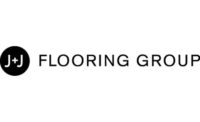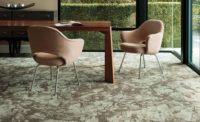Trends in Senior Living Floors










Senior living as a broad segment category in commercial interiors has been a growing market for several decades for many Starnet members. The industry has been supported by the demographic trends as well as the carefully mapped business strategies of the developers and operators.
The Centers for Disease Control and Prevention (CDC) reports from 2016 show nearly 30,000 residential care communities in the U.S. support nearly one million licensed beds. In addition, nearly 16,000 nursing home facilities support nearly 1.7 million licensed beds. The numbers are likely underestimated. The increase in various senior living facility types available from property developers may not be represented in these figures. This market represents at least a few hundred million square feet of space Starnet member companies help to manage so that patients can thrive as they move through life stages.
Senior living entrepreneurs have created business models that allow them to support patients depending on their health profiles and the support environment delivered by the facilities and staff enables flexible levels of care. The senior living industry uses some variation of category labels to describe and market each level of care delivered. Some of the common category labels are independent living, adult day facilities, assisted living, memory care and skilled nursing facilities.
Our industry speaks often about the relationship defining the reason for success. An example is, “I won the project because I have the relationship!”
Relationships are a reward for the delivery of value. The delivery of value occurs in repeatable areas – deep understanding and response to client needs, operational and service excellence, and innovative approaches to solving problems with services and products. Starnet members bring value to the senior living market by the collecting and focusing capabilities of their network of business partners and manufacturers—earning the relationship on every project.
Phil Buda, Project Manager, Axis Interior Systems, Hamilton, Ohio
Phil Buda has been focused on the senior living market during his career with Starnet member Axis Interior Systems. His experience spans over nearly two decades in the segment with new construction and renovation.
Q: Have there been significant changes in the use of products with your senior living clients over the years?
Buda: I have seen a few major changes in this segment. In general, the quality of products and attention to design in these spaces has advanced dramatically. The expectations of the operators and the families looking out for their senior family members is dramatically improved. LVT now dominates with my clients as the preferred product, and the manufacturers are doing a good job providing more design options. My senior living clients continued to use carpet as the main flooring choice well past the changes Axis observed in other segments. We now see broadloom as the preferred product only for individual units because of its thermal properties, but these units are replaced often, so durability is not the main concern like other areas. We have also seen major investments in airlock entry systems. This helps to manage patient security, but also addresses the concern for slip fall during our tough winters when combined with an abrasive walk off system. I can see elements of hospitality design trends. They can be seen in the function of the space, adding gyms and tracks and activity areas, but also in the style of the space. Many of them are emulating common elements from hotels, which is much different from when I first started serving this segment.
Q: Are you seeing changes in how products are selected for senior living facilities?
Buda: We see a combination of end-user specified, design-firm specified, and Axis specified projects. End user selections are often a brand decision based on client feedback and image. End users will also repeat successful selections to maintain continuity over several facilities. We are happy to execute projects specified by the design firms because they are selecting more finishes for the space that work together, like walls and furniture. The project team from Axis will advise them when there may be alternates. I can protect the professional firm’s reputation with the client because of our long-term experience in existing facilities. Many factors that drive the specification, but sometimes there is no substitute for time in these buildings during operation. Axis offers a broad perspective for specifying the correct products. I understand the patients, facility, staff, budget, schedule, and the products. There is no perfect product, but I find the best solution for the client balancing those considerations. Our clients trust us to manage their selection risk.
Q: Have you found a few products that you have been successful in using for your Senior Living customers?
Buda: My senior living clients were some of the first to adopt resilient wall base with architectural profiles and shapes. When I brought profiled base in as a solution to the chronic problems I had observed in these spaces, they responded immediately. They loved the improved appearance. Profiled resilient base continues to outperform traditional solutions like painted wood and traditional resilient cove base for durability. The adoption of LVT has also been successful. In wood patterns it is being used as a neutral background that does not disrupt the navigation of memory care patients, and at the same time seems to please independent resident and families that visit. We do have to watch some of the patterns that introduce knots and crowns in the wood pattern. That can be disruptive to some patient navigation.
Q: What impact has the COVID-19 pandemic had on your senior living business?
Buda: Our operations team had a strong focus on safety, so with some adjustments they have been able to continue work. Some of the big changes were mandatory masks, sight checks on symptom questionnaires, and temperature checks during the shift. Some of our Senior Living clients have been aggressive in remodel and replacement while their patient population allows it. Other clients have stopped all work because their management teams have other priorities during this crisis. Long term, this market will continue to be rewarding for our business and personally rewarding for me as I see the operators getting better for patients and families every year.
Michael Hawley, Vice President, Workplace Services, Escondido, Calif.
Michael Hawley serves the senior living market in southern California where both the climate and the general value of real estate attract significant operator investment. In addition, clients in the market often choose to work with design firms that specialize in the segment
Q: The senior living market has continued to support carpet as a major element of the interior space, including wide use of broadloom. Will that continue?
Hawley: We find that clients continue to use products that they are comfortable with and deliver predictable results. The patients and their families also impact product use. If the Senior Living facility is getting positive feedback, they will continue with those trusted solutions. In our projects we find that broadloom gives us the design flexibility we need that we still cannot accomplish in carpet tile or alternative products. We continue to evaluate product solutions, and nothing is off the table, but broadloom continues to check many boxes for clients. Workplace Services can execute at a high level using broadloom solutions.
Q: Do you see opportunities for senior living product solutions that your manufacturer partners can capitalize on?
Hawley: In the Senior Living segment, products that look great and perform well always have a chance. Safety is always a concern. At Workplace Services we pay special attention to wayfinding and slip fall mitigation as core to our responsibility in making selections or advising the project team. We work hard to minimize changes in elevation everywhere in a space. When we are specifying, it is much easier to control that concern, even when mixing products. Wall to wall use of any product is not the trend, so manufacturers should be working hard to provide multiple product families that have the same elevation in the space once installed. We see some of that with carpet tile and LVT, but the industry can do so much more. In the meantime, we have found some favorite solutions that work together, and the client response has been very positive.
Q: Safety is always a concern in senior living facilities. What issues do clients ask you to address?
Hawley: Changes in elevation are always a concern to be addressed. In addition, there are high risk areas for the staff, such as the commercial kitchen. We have found some alternatives to traditional quarry tile in slip resistant resilient for those areas that are getting good feedback. Workplace Services uses ceramic in many areas, so it is still a great solution, but serving kitchens are a staff slip fall risk resolved by slip resistant sheet products. Another area of concern is the main entrance walk off area. In the past we avoided the more permanent and complex systems that required concrete work to create a recess for aluminum grates or slatted mat rails. Several manufacturers have introduced fully developed matting systems that are very effective. These systems are flexible to work with in the field and offer a combination of absorption and scraping to tackle the moisture and soil. In addition, the tools for selling and presenting these systems are vastly improved from traditional chain sets. We have had greater success selling entry systems and the clients have been happy with our approach to managing their slip fall risk.
Q: What are your professional interior design clients sharing with you on COVID-19 and their business outlook?
Learn more about the latest market trends
Hawley: The outlook for the senior living market is very strong. Operators have a chance to serve an active senior community that start as lifestyle clients and eventually become patients over decades. Our interior design clients that serve this market see the same opportunity. The view of COVID-19 is that it will continue to be highly disruptive in the short term. To protect our vulnerable seniors, some impact to interior finish selections may occur related to new infection control procedures. The larger concern is what the political environment will look like and what policies will be advanced that will spur investment, or stifle investment. All that remains to be seen. There is real concern is the impact of action by federal, state, and local officials on enthusiasm for investment and operator profitability. They will have to balance the risk and reward of a market that absolutely needs these facilities as we live longer and more active lives.
Looking for a reprint of this article?
From high-res PDFs to custom plaques, order your copy today!














